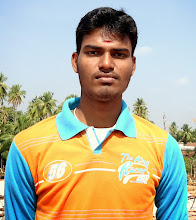TENSILE STRUCTURES – INTRODUCTION
Tensile Structures
Tension roofs or canopies are those in which every part of the structure is loaded only in tension, with no requirement to resist compression or bending forces.
Classes of Tensile Structures
1. Membranes – The structural membrane acts also as the weathershield

Common materials for doubly curved fabric structures are PTFE-coated fibreglass and PVC-coated polyester. These are woven materials with different strengths in different directions. The warp fibres (those fibres which are originally straight—equivalent to the starting fibres on a loom) can carry greater load than the weft or fill fibres, which are woven between the warp fibres.
2. Cable Nets - A separate grid of structural cables supports a non–structural weathershield

3. Pneumatics -The tension force is created by an interior positive pressure and the membrane acts as the weathershield

Shapes of Tensile Structures
1. Anticlastic Surfaces – The centers of curvature of the membrane are on opposite sides of the membrane e.g. hyperbolic parabaloid, torus.

2. Synclastic Surfaces – The centers of curvature of the membrane are on the same side of the membrane. E.g sphere or balloon.

3. A Simple Paraboloid – Defined by a Minimum of Four Points w/ at Least One out of Plane.

Equilibrium Forces
1. Anticlastic Surfaces – The surface is stabilised because the tension forces
from prestressing or load are in equilibrium.
2. Synclastic Surfaces – The surface is stabilised because the tension forces from internal pressure are in equilibrium with the tension forces in the membrane.
Deformations
By definition, the membrane can only resist forces in tension, so forces perpendicular to the membrane cause large deformations and large membrane forces.
• Tensile roofs are susceptible to vibration.
• Reverse curvature and/ or prestressing can bring these forces to zero.
Materials
1. Uncoated fabrics
- Simple woven fibers
- Canvas, nylon
2. Coated fabrics
• High strength woven fibers w/ coatings to prevent UV– & environmental degradation and improve weather resistance.
• PVC–coated polyester: relatively short service life
• PTFE–coated glass fiber: high strength, long service life
3. Foils
• PVC– and ETFC– foil
Edge Conditions
Rope Edge – A cable running in a sleeve and connected to a rigid structure at both ends
Hard Edge – A continuous connection to a rigid structure through clamping plates with or without prestressing devices.
Point Supports
• Masts capable of resisting compression and buckling forces.
• The magnitude of forces at the point support require distribution via rings or umbrellas


Line Shaped Supports
• Arches – internal or External
• Valley and Ridge Cables
